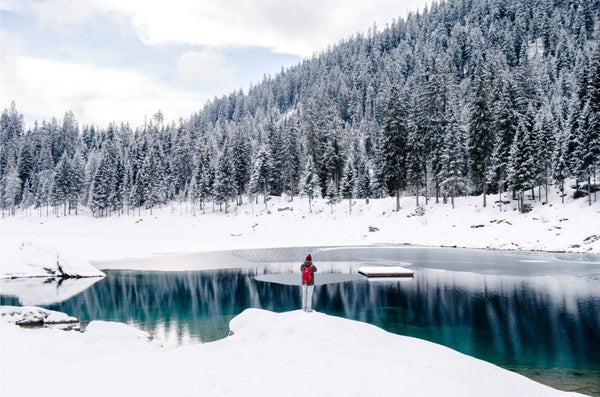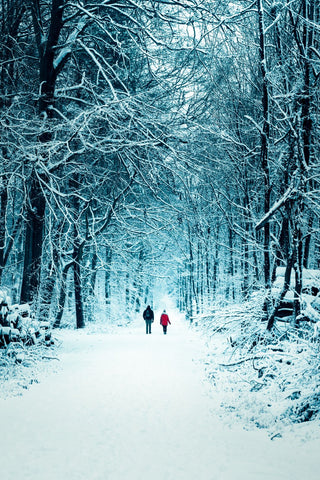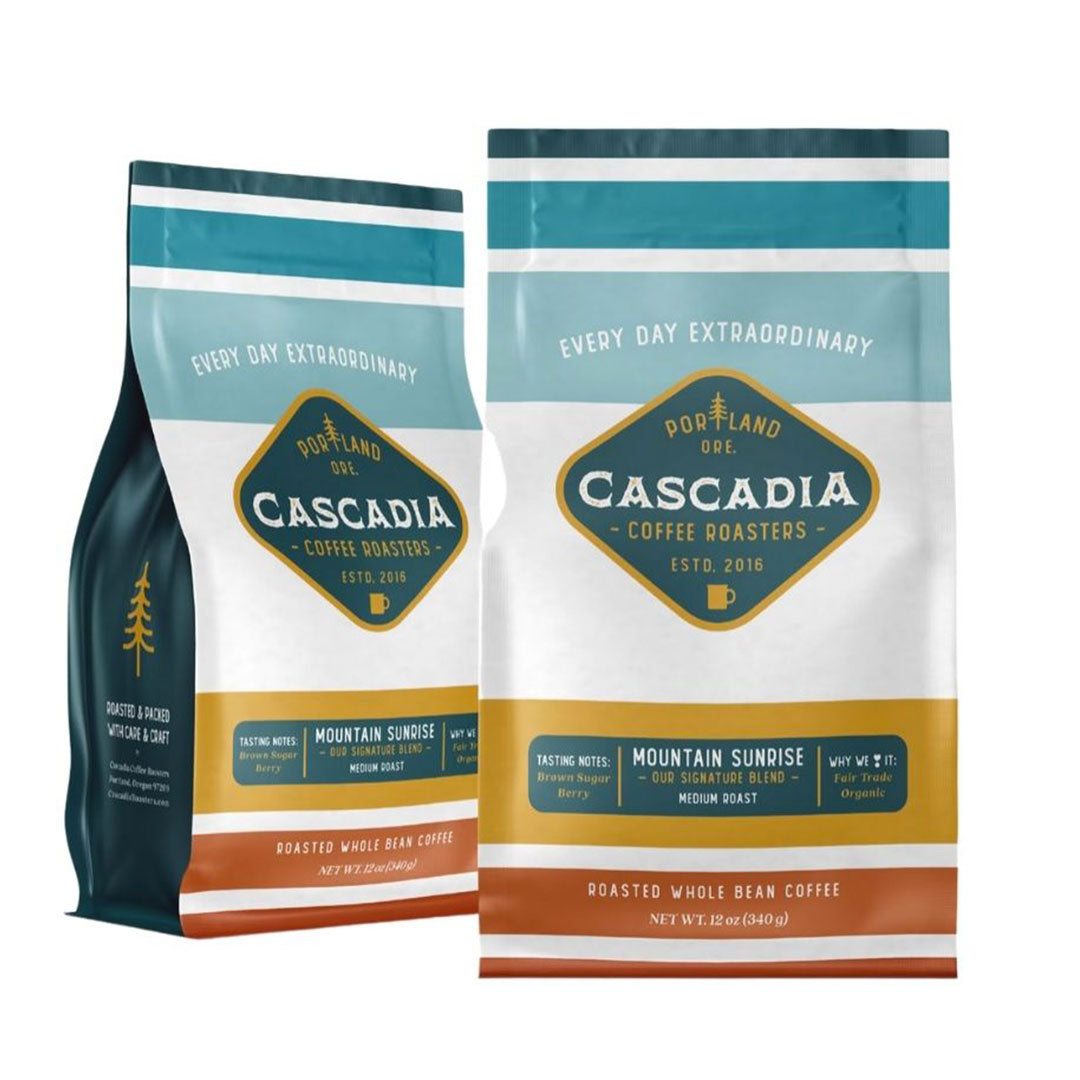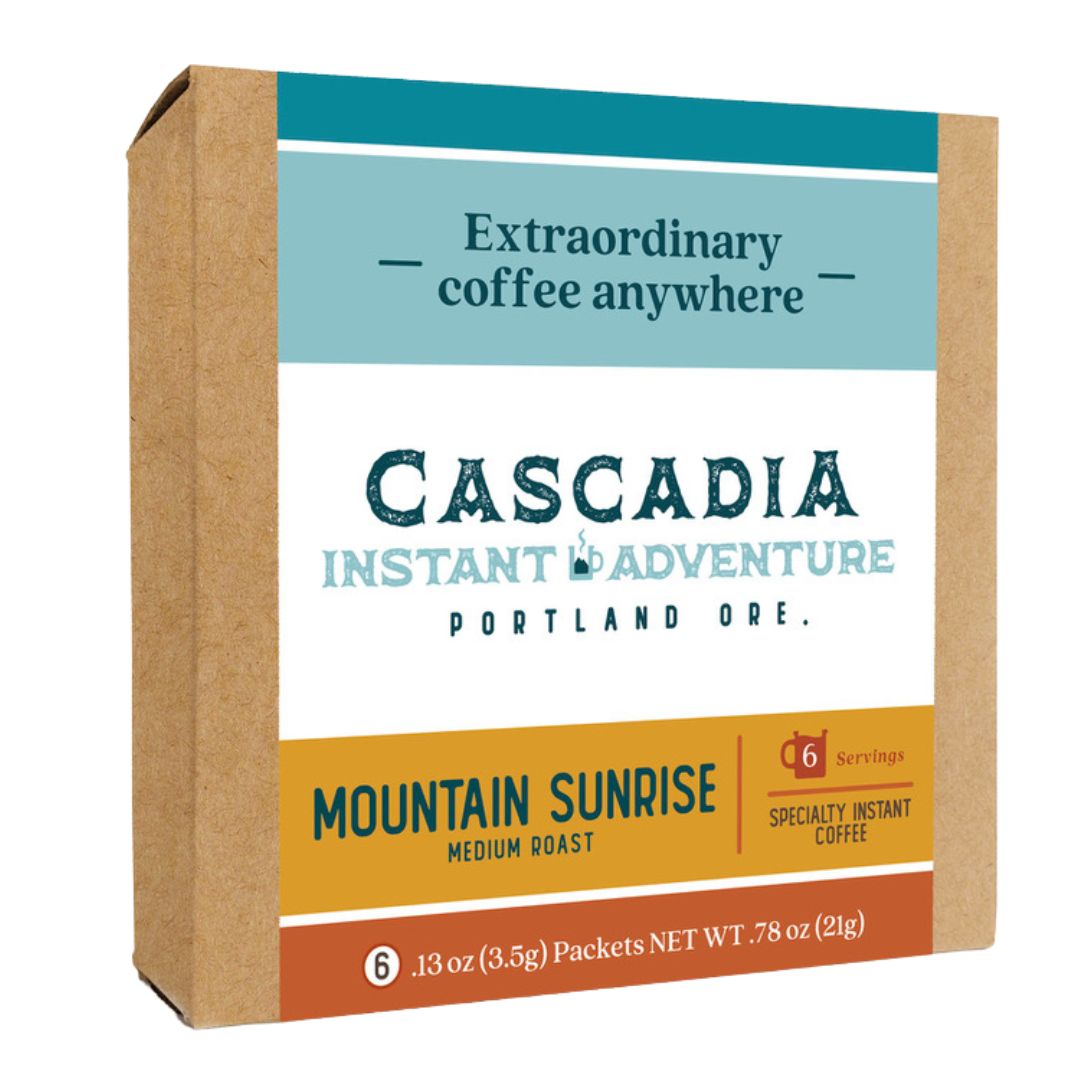
Snow—at home amidst the hustle and bustle of work, school, holiday activities, and errand-running—can be a bit of a nuisance. But step away from the workaday grind and set out for a nature hike on one of Oregon’s many stunning trailheads, and it provides a glorious, filter-free, #Insta-worthy effect…and great reason to pack a thermos or two of Cascadia Coffee.
Unlike our midwestern cousins, winters in the Pacific Northwest are typically mild. But don’t take things too much for granted. Hike Oregon reminds us that “Winters in Oregon can vary wildly in weather and snow conditions from year to year. A few years ago, the winters (2013-2014 & 2014-2015) were extremely mild and we were still able to hike right around 5,000 ft. elevation even during the coldest months of December, January, and February. Other years winter can start early and can provide so much snow that you can barely hike at 2,300 ft. elevation without hitting snow.” Check out their advice on How To Dress For Cold Weather Hikes to keep everyone safe and warm whether in snow, ice, or just plain old Oregon rain.

Our region is teeming with spots perfect for a short afternoon jaunt or intense weekend-long expedition, you just have to know where to look. Here are a few that will provide a cure for the post-holiday doldrums and inspire you to plan ahead for those long summer sessions outside. Note that some parks require passes, day-use fees, or have limited winter hours. Check each unique website for travel recommendations, access restrictions, parking changes, and other weather-related or seasonal updates.
Maxwell Sno-Park: Something for Everyone
This is an ideal spot for just about anyone, at any experience level, wanting to brave the cold for a glimpse of nature at its finest. With 25 miles of trails, they range from easy to difficult, offer panoramic mountain views, and are beloved by hikers, snowshoers, and cross-country skiers. There are proper bathrooms, two snow shelters, and the trails are well-marked. Some hikes include passage through old growth forest for a change of scenery.

Santiam Sno-Park: Family-Friendly Sledding and Tubing
Like it’s neighbor the Maxwell Sno-Park, this area is a popular winter destination but takes itself a little less seriously. There’s only one trail (which is less than 1.5 miles and rated ‘easy’) but it welcomes families with a snow play area for sledding and tubing. In fact it’s one of only two tubing hills on the Willamette National Forest and the only recommended sledding or tubing hill in the area of Santiam Pass. Things can get busy on sparklingly sunny winter days, so pack the night before and arrive early!
Multnomah-Wahkeena Loop Hike: AKA the Iconic Multnomah Falls
More than just Multnomah Falls, this 5-mile loop also passes Wahkeena Falls, Fairy Falls, Weisendanger Falls, Ecola Falls, and Dutchman Falls. Winter means fewer crowds and more magical scenery…as if that were even possible. (Hint: it IS!) With all this water activity, bundle up to avoid the spray and watch your footing on cold, frosty days. Multnomah Falls closes when things get icy, but Wahkeena stays open and provides access to hiking spots along the way.

Salt Creek Falls Trail: Crystalline Winter Waterfalls
Here you can see Oregon’s second highest waterfall at nearly 290 feet. In the wintertime, the falls become an icy, slushy, bejeweled masterpiece. Find them via a hike that’s less than 1.5 miles round trip or step things up by incorporating Diamond Creek Falls’ 5-mile loop or Fuji Mountain Road’s 8-mile route. For families, there are educational opportunities at the Salt Creek Falls Observation Site and Picnic Area and both observation platforms and restrooms are wheelchair accessible. Though the Observation Site is technically closed in winter, you can park at the nearby Sno-Park and walk less than half mile to the falls down the main road.
Forest Park: Portland’s Hidden Wonderland
At more than 5,000 acres, Forest Park is one of the biggest city parks in the entire country. Trails, hills, glens, and forests contain 70+ miles of hiking opportunities and you haven’t even left the city. During winter things can get muddy, however, so pack accordingly. Especially if you bring two- and four-footed/-hoofed explorers along on your adventure.
Oxbow Regional Park: Fish for your Supper
We’re lucky enough to find meandering trails under primeval, old-growth forest a tad blasé. But what about the opportunity to catch fresh winter steelhead…without leaving Portland’s metro area? At Oxbow Regional Park, just east of town, there’s a boat launch, 12-miles of trails, spawning salmon, camping, and even warm-weather access for tubes and kayaks. The icy waters of the Sandy River are also home to trout and salmon so come equipped to haul in the catch of the day.

Harris Beach State Park: Beaches Aren’t Just for Summer
Within rock-skipping distance of the California border is Harris Beach State Park. In winter, gray whales migrate past nearby Bird Island and there are even rentable yurts to turn things into an overnight stay this chilly time of year. You can buy firewood on-site and hot showers mean toasty nights for everyone. Snowy beaches are a rare treat and one definitely not to be missed.
Cape Lookout State Park: Watch WhalesFly Swim South for Winter
Gray whales may be the biggest snowbirds known to man. From mid-December through mid-January, more than 20,000 travel south past Tillamook’s Cape Lookout en route to the warmer waters of Baja, Mexico. Can’t wave Bon Voyage amidst the hectic holiday buzz? Don’t worry, they head back up to Alaska in late March. The park has year round camping and a 5-mile round trip Cape Trail with views that top 40+ miles to Tillamook Head. Rent a yurt or deluxe cabin, bring the canine kiddos, and even plug in your EV with some of the most dynamic views in the state.
Billy Bob Sno-Park: Best Name Winner, hands down, unless…
Considered a shared use area, Billy Bob welcomes skiers, snowmobilers, hikers, snowshoers, and (warmer weather) mountain bikers. Even on a cloudy day Mt. Hood is visible and brave souls can stay at the Fivemile Butte Lookout, a rentable, furnished cabin located on top of a breathtaking 40-foot tower. But as the name suggests, getting there requires a 5-mile roundtrip slog via ski, snowmobile, or snowshoe and 100% pack in/pack out commitment.

...You CountTom, Dick, and Harry.
Just an hour from Portland, this is a great winter spot to find views of Mt. Hood. Not a long hike—just two miles to Mirror Lake—it includes glaciers, slopes, mountains, and more. But it can be tricky to get there in stormy weather so check posted access and availability first. Mirror Lake can be deceptively covered by a smooth, fresh snow, or reflect like diamonds on a wintery sun-filled day.
Terwilliger (Cougar) Hot Springs: Snow is Best Enjoyed from Nature’s Jacuzzi
Sure, snow is great. But I think we can all agree that it’s even better when enjoyed from somewhere warm…like a hot tub. Terwilliger Hot Springs are accessed by a short, .25 mile trail and available on a first come/first served basis with a 2-hour maximum and 50 person capacity. With four soaking pools ranging from 85 to 112 degrees, it’s almost like you were in one of the clothing-optional parts of Florida…with evergreens and waterfalls. However, the access road is not maintained for snow and ice so travel with caution. Don’t forget that many Oregon hot springs are similarly clothing optional so consider yourself warned.

Cold weather hiking, according to the American Hiking Society, requires a few extra steps…and that’s not only to keep your toes warm. “Just because the temperature has fallen like the leaves of a tree doesn’t mean you can’t have an enjoyable hike outside. With a little extra preparation, hiking in the winter can be every bit as enjoyable as hiking during the warmer months. If you have the gear for a warm-weather hike, you can easily modify it for the cold…Winter can be one of the most peaceful seasons to enjoy some solitude on the trail, but it also comes with increased risks that hikers need to prepare for.”
They remind adventurers to check the conditions and park’s official website, always dress in layers, wear a hat no matter what, and keep your water bottle and spare batteries warm. Also don’t skip sunscreen because snow glare reflects 80% of UV rays and can lead to a nasty burn. Protect your eyes with UV rated goggles or sunglasses (which also help against cold wind). Pack plenty of freeze-proof snacks like crackers, nuts, and chocolate, and don’t forget that sunset sneaks up on us all this time of year.
Never hike without telling others exactly where you’ll be and make sure your car is stocked with a full tank of gas, tire chains, blankets, food and water, maps, and a medical kit. Watch every step and stuff at least one pocket with Cascadia Instant and you’re good to go.





